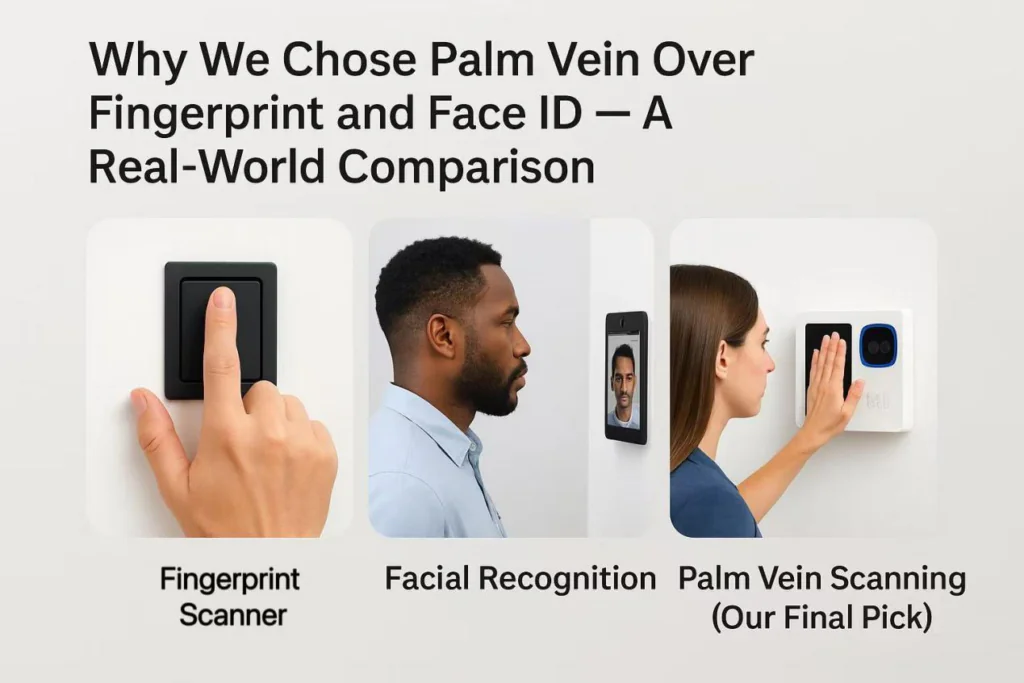When you’re designing identity systems for critical infrastructure—airports, logistics hubs, secure offices—you can’t afford to guess which biometric method is best. You have to test, compare, and deploy what actually works in the field. That’s exactly what we did.
Over the past year, we evaluated fingerprint, facial recognition, and palm vein technology across multiple client sites. Each had strengths—but only one stood out when it came to security, user experience, and long-term viability: palm vein.
Here’s What We Found
Fingerprint Scanning
Great in theory, but in practice? Not so much.
We ran into issues with skin dryness, surface damage, and hygiene concerns—especially in high-traffic industrial environments. Spoofing risks were another concern. Bottom line: too many failed scans and too much maintenance.
Facial Recognition
This one fared better, but lighting and privacy concerns were dealbreakers.
It worked well indoors, but bright outdoor light caused inconsistent results. Some users were uncomfortable with face tracking. For public sector deployments, it raised regulatory red flags.
| Aspect | Palm Vein Recognition | Fingerprint Recognition | Facial Recognition |
|---|---|---|---|
| Feature Points | 500–1,000+ (dense internal vein patterns) | 30–80 (ridge endings, bifurcations) | 60–150 (facial geometry landmarks) |
| Security | Very High — internal, hard to forge | Moderate — can be lifted or duplicated | Moderate — spoofable with photo/video |
| Skin Condition Impact | Minimal — works with dry/wet hands | Significant — affected by cuts, dryness | Moderate — affected by lighting, aging, etc. |
| Hygiene | Contactless — highly sanitary | Touch required — hygiene risk | Fully contactless |
| Use Cases | High-security (finance, healthcare, border) | Everyday access (phones, clocks, ATMs) | Consumer tech, surveillance, ID applications |
Palm Vein Scanning (Our Final Pick)
The XT-WavePass500 changed the game for us. With its RGB + IR dual-sensor setup, we got consistent, fast, and highly secure reads—without users needing to touch anything. The internal nature of palm vein patterns makes them nearly impossible to forge, and users found it intuitive to use.
Plus, this device brought other benefits we didn’t expect:
- Built-in QR code scanner for hybrid authentication
- Support for NFC cards, perfect for fallback options
- AES-256 encrypted data, ensuring compliance and trust
- Optional face and barcode modules, future-proofing the system
Our Clients Noticed the Difference
One of our enterprise clients replaced a legacy fingerprint system with the XT-WavePass500 and immediately reported higher user satisfaction and lower support calls. Staff no longer struggled with scanner errors, and IT no longer fielded hygiene-related complaints.
If you’re weighing different biometric options, don’t just go with the most familiar—go with what performs. In our experience, that’s Palm Vein Technology, and the XT-WavePass500 is the most capable device we’ve worked with yet.
👉 Learn more or request a product demo: x-telcom.com/Palm Vein Technology



